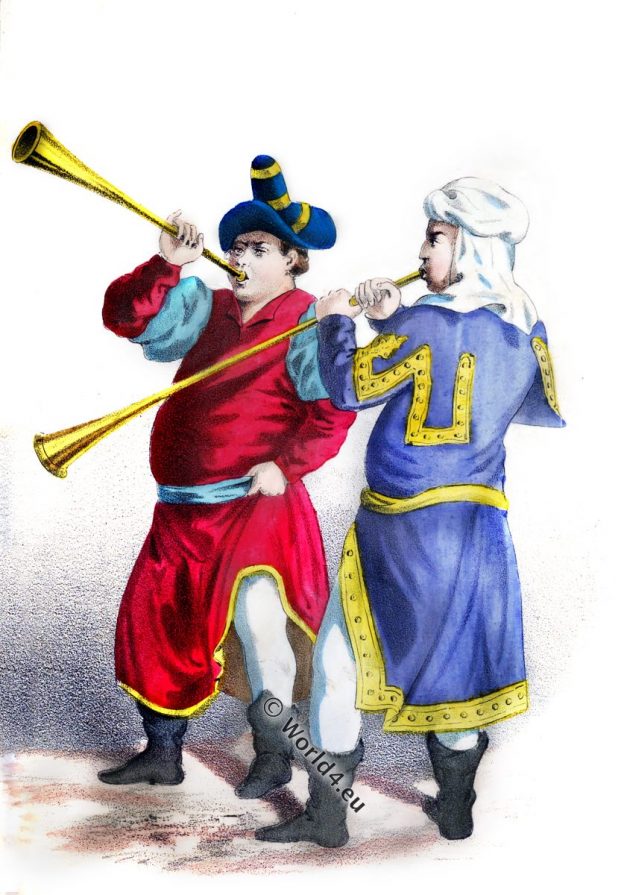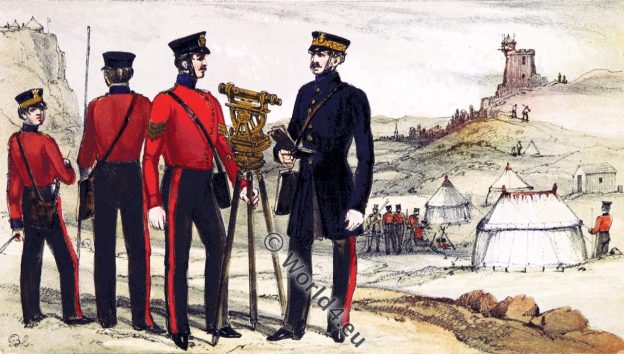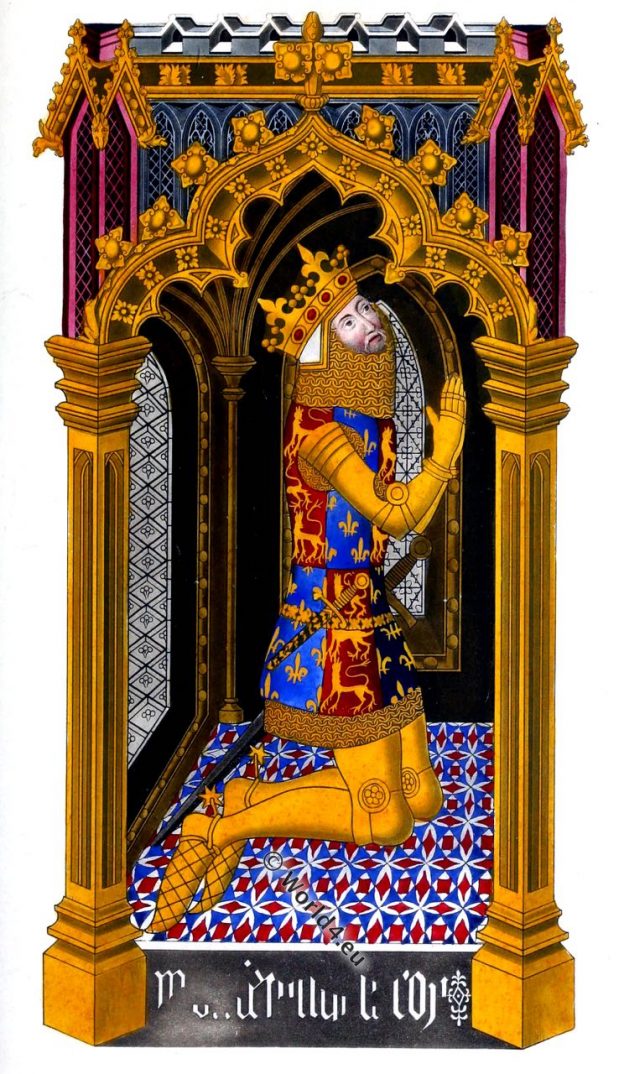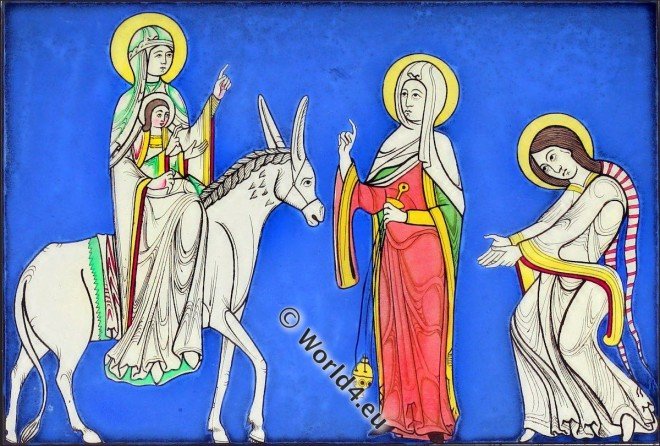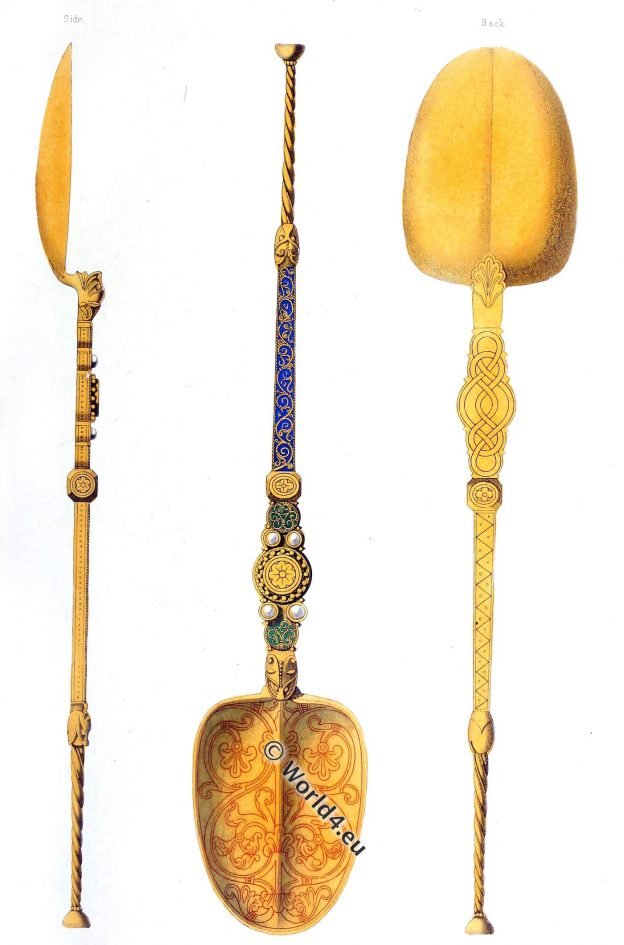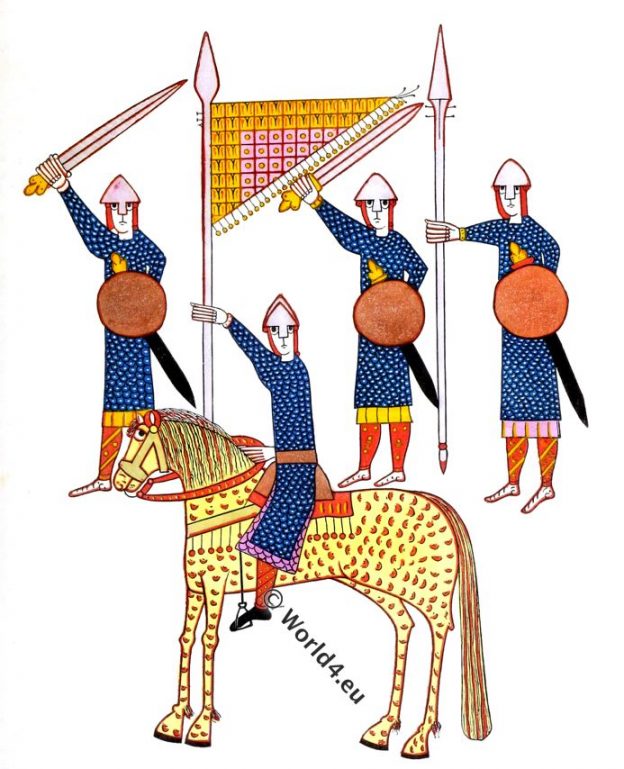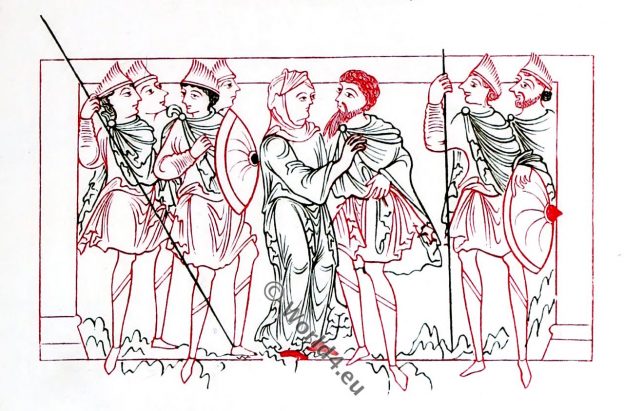The plate which we give represents a group of simple musicians of the time of Edward III, and the singularity of their costume proves that a taste for the grotesque in dress had already made sensible progress at this period.
Category: England
Period Costumes and Fashion from England, Regency, Empire, Georgian, Directory, Victorian and Tudor dresses.
Royal Sappers and Miners. Working Dress 1854.
Royal Sappers and Miners. Working Dress 1854.
EDWARD III, King of England and Wales. Anjou Plantagenet dynasty.
Edward III. from the Anjou Plantagenet dynasty, is considered one of the most important English rulers of the Medieval times.
Courtiers of the time of Richard II.
Anjou-Plantagenêt ruling dynasty of medieval England
Geoffrey Chaucer. English writer and poet.
DAN Chaucer, as he is termed by some of our older writers, is the popular representative of the earlier period of English poetry; indeed he may be considered The Poet, par excellence, of the English Middle Ages.
Ladies fashion of the 12th century. Virgin Mary. Anglo-Norman servants.
These figures present interesting examples of the female costume among our ancestors in the first half of the twelfth century. Illuminations of the Cottonian Manuscript Nero C. IV.
Coronation spoon of English monarchs. 12th century.
Coronation spoon of English monarchs.
Ecclesiastics of the 12th century. Bishop, monks.
Figures of prelates from a early Anglo-Norman version of the Psalter, in MS. Cotton, Nero C. IV., in the British Museum.
Spanish warriors, jongleurs, minstrels in the 11th century.
The figures which form our plate represent Spanish warriors of the latter part of the eleventh century, and are interesting on account of their remarkable resemblance to the Anglo-Norman soldiers on the celebrated Bayeaux Tapestry.
Illustrations of Prudentius. Anglo-Saxon civil and military costume.
Prudentius is the most important Christian poet of late antiquity. Prudentius was very popular in the Middle Ages. There are more than 300 manuscripts, the oldest one from the 6th century.

